page 6
~ The Study of Threes ~
http://threesology.org
| Hybrids page 1 | Hybrids page 2 | Hybrids page 3 | Hybrids page 4 | Hybrids page 5 |
| Hybrids page 6 | Hybrids page 7 | Hybrids page 8 | Hybrids page 9 | Hybrids page 10 |
| Hybrids page 11 | Hybrids page 12 Playmate God |
Hybrids 13 Economics 1 |
Hybrids 14 Economics 2 |
Hybrids 15 Economics 3 |
| Hybrids 16 Economics 4 |
Hybrids 17 Economics 5 |
Hybrids 18 Economics 6 |
Hybrids 19 Economics 7 |
Hybrids 20 Language 1 |
| Hybrids 21 Language 2 |
Hybrids 22 Language 3 |
Hybrids 23 Language 4 |
Hybrids 24 Physics |
Hybrids 25 |
| Hybrids 26 | Hybrid 27 |
Visitors as of 30th July, 2021

As the reader goes from one page to the next in this series, it should be understood that as I create a page, I may continue writing while I split it into one or more others which are then tagged as the next page in the series, though the content may have been laid out much earlier than the page which comes before it. Like the layers of sedimentation, what came earlier may be what is seen much later in the series. Hence, some of the content may appear to back-track or mimic ideas which appear to the reader as occurring first, but actually occurred much later when writing. As I publish a page I then move on to the next one which may have been written much earlier but got pushed down as I write and then appears as a later web page. Sequencing of thoughts may appear to some as a little "hopscotchy" but while writing one thought actually flows to the next. Separating pages so that they do not become too long and thus take too long to load (especially when using numerous images), plays a part in when I decide to split the information, over-which may be additional information as I continue writing as I am doing now. This portion was not part of an earlier page and thus may appear to some readers as an unexpected interruption in the flow of ideas, but some sort of caveat needs to be inserted. In addition, as I review the page from the source code (backside) and front side, I may insert another idea or more that did not occur when I originally started. In fact, the initial effort was a mere one-page excursion that has grown into eight, though this is page six I have begun to work on after publishing page 5 early yesterday evening. It is 3:13 in the morning (9/26/2021) though I rose earlier and began attending to other chores such as looking at emails and fixing some html on a few other pages not connected with this series. As in many series, the later pages may contain ideas which occurred much earlier but got pushed forward onto later pages as I continued to write. And yes, I realize I just repeated myself, but repetition does sometimes help with clarity... or at least memorization for those who may be reading this in those early hours of sleeplessness which I too experience. Some of the content on this page was written much earlier, but it is now earmarked for this page upon which I begin writing anew. If ideas appear to be overlapping it is because I retrace my thoughts to try and take up where I left off. Sometimes I am more successful at this than at others. Nonetheless, come what may, I jot it down for some future reference that I may or may never get to.
Let me insert at this point the idea about people not eating healthy enough and that this, supposedly in large part, is the reason so many have health problems. However, processed and other commercialize foods (as hybrids), are created by those who have a prominent interest in making money... in as cheap a way as possible. Proper nutrition and "what is naturally good for you" is not necessarily a priority. The creation of such hybrid foodstuffs is the creation of monsters attacking the health of the public. Such an attitude coupled with the business-oriented United States Department of Agriculture (USDA) which sets the guidelines for nutrition, also has the agenda of promoting this or that industry for the sake of some model of economic prosperity for the Nation... including making sure the American Medical Association stays in business. Disease and disability are good revenue makers, despite the government's assurances that its foremost interest is in the well-being of the public. This is true for other governments as well. And you don't see religion attempting to cure the evils of anyone's soul without resorting to the sells of their own philosophy which promotes themselves and the need for the public to continue buying their elixirs which in so many cases is just another type of slow acting poison. Evil comes in many forms and many guises. Businesses, governments and religions all have their own.
As I have been thinking about the Earth's rotation and how its slowing is affecting life, I correlate other forms of circular movement to this influence such as the development of chirality in biological activity. For some reason, I have frequently been presented with the image of circular movement whenever I see the word "chiral". I don't know why and my speculations suggest to myself that perhaps it either looks or sounds similar to whirlpool. Yeah, I know, this may seem a bit strange, but I can't shake the image and relate the idea of chirality to movement, though it is defined by the wikipedia article as a distinction between handedness and does not emphasize anything to do with movement (I added a few words because the writer of the article was being too condensed in their explanation):
Chirality is a property of asymmetry important in several branches of science. The word chirality is derived from the Greek word (kheir), for "hand," which is a familiar chiral object. An object or a system is chiral if it is distinguishable from its mirror image; that is, it cannot be superimposed onto it. Conversely, a mirror image of an achiral object, such as a sphere, cannot be distinguished from the object. A chiral object and its mirror image are called enantiomorphs (Greek, "opposite forms") or, when referring to molecules, enantiomers. A non-chiral object is called achiral (sometimes also amphichiral) and can be superposed on its mirror image.
For some reason, the idea of mirror-imaging induces the image of movement and the word 'chiral' makes me think of circular movement. Hence, I make a connection with the Earth's rotation and its polar states as mirror images. To me, a mirror image is not a static one. A reflection moves back and forth at the speed of light due to photonic behavior. The mirror is a flat object of interference which reflects an image, though the image seen may not be true in the sense that our ability to perceive reality is rather limited. We only see a small portion of reality with our physiologically-based perceptual system. Anyway, the idea of chirality like so many other things, sparks my interest in want to know what may have originated its presence in existence with respect to its appearance in chemistry and biology, as well as physics, since I think the spin properties of atomic particles is chirally based. The topic is extremely fascinating to me. Here is an example:
The Origin of Biological Homochirality by Donna G. Blackmond (Cold Spring Harb Perspect Biol. 2010 May; 2(5): a002147.)
Abstract
The single-handedness of biological molecules has fascinated scientists and laymen alike since Pasteur's first painstaking separation of the enantiomorphic crystals of a tartrate salt more than 150 yr ago. More recently, a number of theoretical and experimental investigations have helped to delineate models for how one enantiomer might have come to dominate over the other from what presumably was a racemic prebiotic world. This article highlights mechanisms for enantioenrichment that include either chemical or physical processes, or a combination of both. The scientific driving force for this work arises from an interest in understanding the origin of life, because the homochirality of biological molecules is a signature of life.
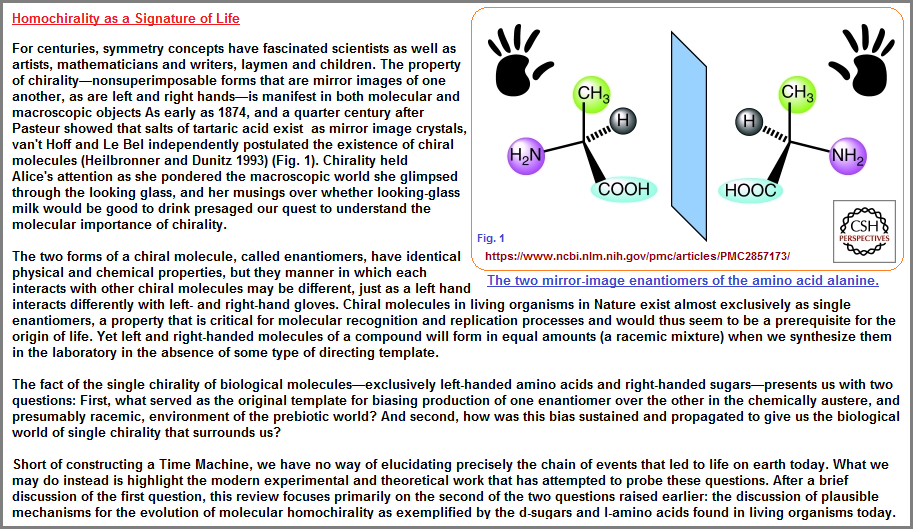
Different subjects have their own signatures. Patterns-of-three appear to be a signature as well. Mirror-imaging is a pattern-of-two unless you begin thinking about how light can interact with different types of objects, whereby different 'signature' expressions arise, particularly when more basic expressions (such as waves and particles) are entertained in the mix of considerations:
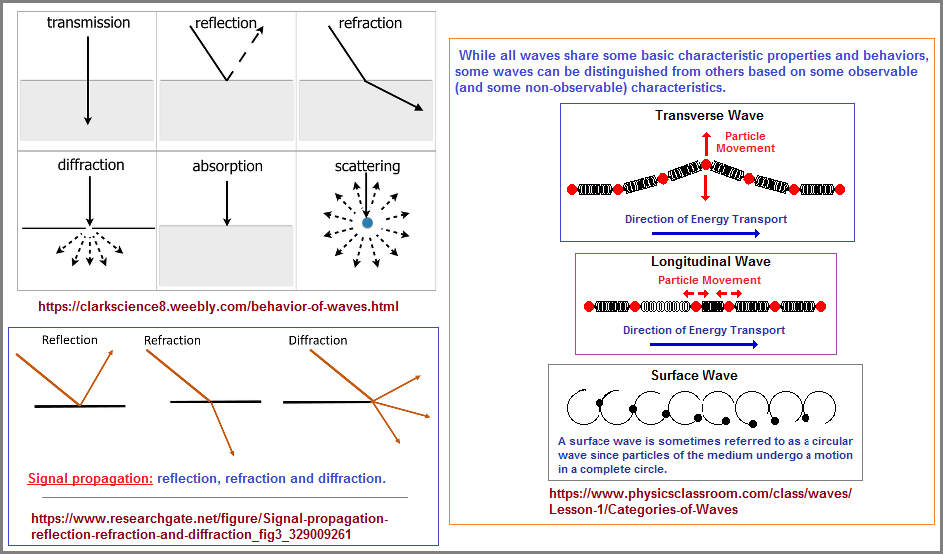
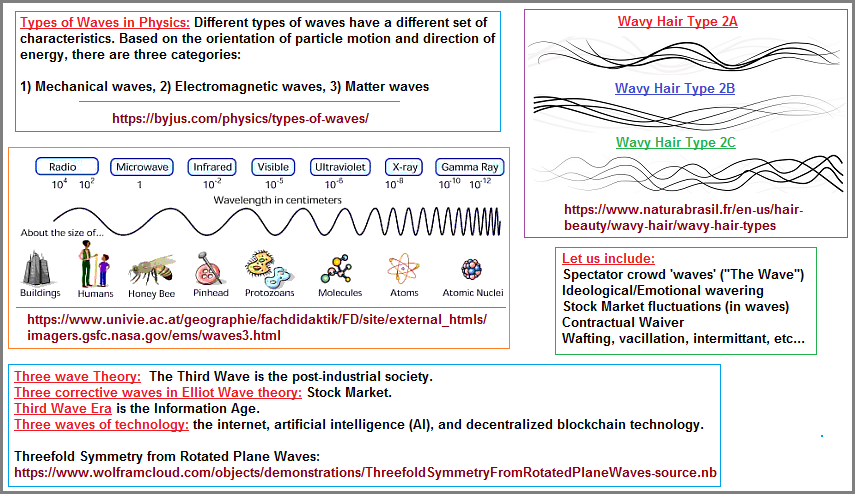
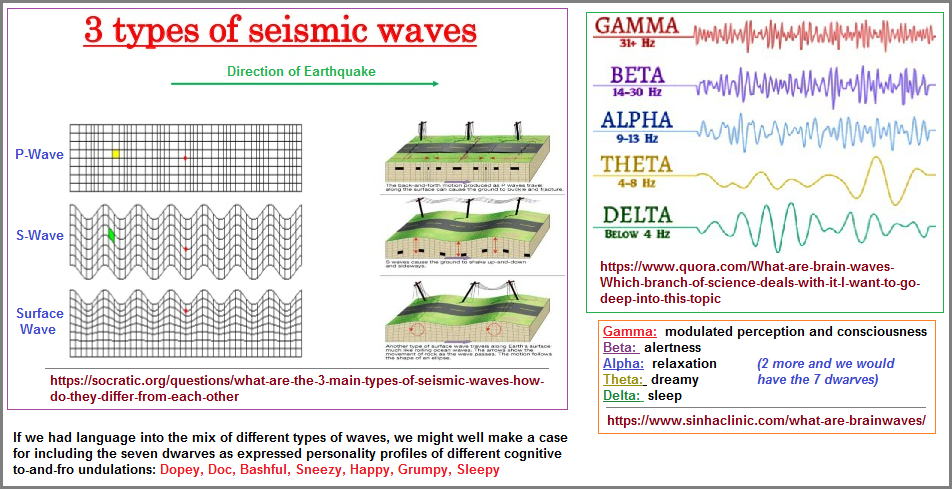
Interestingly, waves are generally represented as being linear, though surface waves can be described as having a circular conformation. Since a "wave" is usually a repetitious event, this can be described as a state of hibridization, in the sense of two or more items being combined. If we say that all waves repeat at one time or another, regardless if humans are nearby to observe, then by this definition, a mere sequence of numbers is also a wave. Since there are different sequences being observed, one might describe some as unique and others as rather commonplace, though the commonplace nature of the Fibonacci series in botanical settings captures the imagination of many who come to make correlations of the discovered patterns to other subject matter. So too then is the prime number sequence a wave pattern. The only problem with number patterns however, is we may not know what caused the wave. Hence, we ask... where was the originating pond and pebble dropped into it? And yet, not only can a sequence of events be a wave, but the different types of observations and observers as well. Whereby those who argue against this might well be referred to as the particle half of the wavicle idea. Whereas you may call something a vegetable and I call it a fruit, most people forget to include the fact that both of us eat it just the same.
We can say that all life forms grow in waves, so long as the definition of wave permits successions relative to a particular growing style. Though some may prefer to say growth occurs in stages or phases, like a phase someone goes through in childhood, adolescence, early adulthood, middle age and old age... if not simply referring to a phase in terms of music tastes, religious explorations, counter-culture experiences, political protest phases, relationship phases, vehicle buying phases, house buying phases, apartment renting phases, pet buying phases, horse riding phases, gardening etc. In any respect, whether slow or fast, the patterns reflect hybrid formulas of development. While a child in their "terrible twos" (etc.) phase may not have horns growing out of their skull to indicate some connection with a devilish counterpart which took over some former angelic person, the child hibridated (morphed) into some creature whom, try as you might with one or another disciplining maneuver, seemed determined to test the limits of your patience.
I go back and forth between different subjects, mixing and matching, in an effort to develop one or another model which will help to better help understand a situation to further the grasp that which might be enclosed by a wagon train by others... and of course myself, unless I am venturing down some rabbit or other varmint hole, not to mention the present (dichotomous) looking glass escaped. Sometimes I find myself in very comical situations that may appear to be irrational, quixotic or even bizarre or pschotropically-induced to some readers, while others may well shrug their shoulders and say to themselves: "Been There, Done That, Bought the T-shirt".
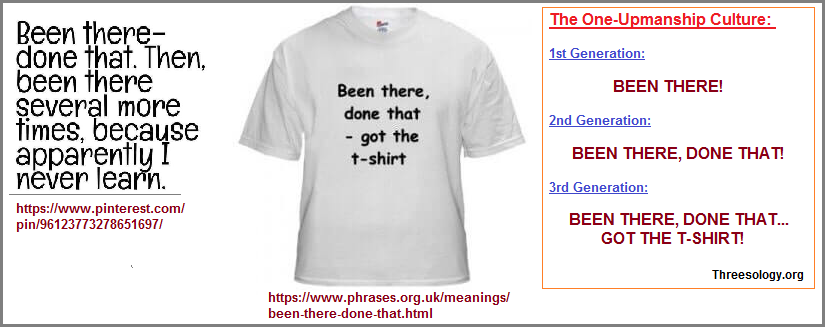
However, just because someone else didn't find any useful treasure doesn't mean you or I won't... one person's junk pile is another person's treasure mound. While writing in a "blueprint" model of exposition is required for scientific and peer review journals, working as I do free from such constraints, I am allowed to explore those roads not taken... or at least not taken by me at a given moment, though I must admit I sometimes get lost and find myself backtracking as well as criss-crossing over the same terrain... like a person trying to find something by retracing their steps, even if they become so absorbed in the search and distracted by other items, they can't remember what it is they were searching for when they first started out. HA! It is quite fun to come across someone such as myself who realizes we share somewhat of a similar mindset and have to be amused at the same conclusions about being lost and don't bother asking one another which way to go since two wrongs in this case do not necessarily cancel one another out to produce a right.
I would think to imagine that waves of multiple thoughts, as well as obsessive recurrences and milder repetitions, may have been more widely accepted in the past, yet controlled by the dominant clan or tribal member who might make allowances for excursions beyond the typical thoughts traversed by the ruling members of the camp, so long as they yielded some advantage to a superior or the group as a whole and could be accepted by the leadership. Then again, we see multiple instances of persecution and prosecution of those who spoke out against established authority... particularly in religious views, and later political ones which were distinct from religious associations.
Today, there are a variety of accepted values, one of which that says creative and even original thinking is permitted, so long as it remains in the purview of those who are established as rule makers whose ideas are not confronted by a would-be usurper. And even though many might well say they accept creative thinking, views and expressions in different exercises, it turns out that such thinking is more often than not expected to mimic some portion or whole of an already established orientation. You can be creative in music... if it entertains, or soothes, or comforts or intoxicated the listeners who are in judgment of the music being expressed, or a valuation such as money is to be acquired. the same goes for other conventionalized means and ways of exhibiting some creative outlay of energy, where many an academic exercise is more often referred to as being intelligent, sophisticated or simply some sign of smartness. But being smarter than others and not kowtowing to those in authoritative positions can get you into trouble, should you attempt to unseat a view of theirs in a given arena which they think... or others think they dominate.
Upon waking up the next day (9/27/2021) and having had the word "plankton" pop into my mind yesterday (whereby I jotted it down and can distinctly remember doing so), I can start anew by having come across the first viewed internet site describing plankton and insert it here; since the foregoing paragraph can be viewed as a summation and therefore a point where I can train my thoughts in another direction. Hence, I will start with plankton and try to merge it with the information compiled previously, whereby I get back on some measure with perspectives which have been pushed forward again and again as I have added new material. If I had used accurate dates for every entry, my pages would look more like what they are, as journal or diary entries. As such, the writing in many of my series is like reading a journal or diary without consecutive dates being displayed. This can make for a wild ride in the consciousness of some readers who have not taken this into consideration when reading single or multiple pages at this site.
Three main types of plankton:
- Zooplankton – single- and many-celled animals that feed on live plankton.
- H.O.B. note: this might also be interpreted as a "one-many" expression such as seen in the E Pluribus Unum (Out of Many, One) seal used in the U.S., as well as early counting forms
- Bacteria – some are photosynthetic, but the majority feed on dead organisms.
- Plant plankton, also known as phytoplankton – single-celled photosynthetic organisms which manufacture food using energy from sunlight, and perform
three main functions, crucial to life on earth:
- They provide nearly half of the earth’s atmospheric oxygen.
- They regulate carbon dioxide levels in the water and atmosphere.
- They are the founding organisms of aquatic food webs.
Three most important types of phytoplankton are:
- Diatoms These consist of single cells enclosed in silica (glass) cases. Each case is made of two interlocking parts with fine holes, through which nutrients and wastes pass. These photosynthetic organisms live in the ocean, with some species common in fresh waters. About 620 species of marine diatom are known to live around New Zealand. Of the freshwater species, only 2% are unique to the country.
- Dinoflagellates This name refers to two whip-like attachments (flagella) used for forward movement. They include photosynthetic members as well as predatory species. About 230 marine species have been described in New Zealand. When masses of red-brown dinoflagellates gather in surface waters they create what is known as a red tide.
- Desmids. These freshwater photosynthesisers are closely related to green seaweeds. They resemble little green cylinders or miniature barbells, and are common in lakes and rivers.
Source: Plant plankton by Maggy Wassilieff, 'Plankton - Plant plankton', Te Ara - the Encyclopedia of New Zealand
3 categories of Marine life:
- Benthos: bottom dwellers; sponges, crabs
- Nekton: strong swimmers- whales, fish, squid
- Plankton: animal/plants that drift in water. The have little control over their movement. Includes: diatoms, dinoflagellates, larvae, jellyfish, bacteria.
3 physical factors are plankton subject to: 1. Waves 2. Tides 3. Currents
3 categories plankton can be classified by: 1. Size 2. Habitat 3. Taxonomy
Source: Plankton Marine life 3 categories 1 Benthos bottom
The greater the complexity, the greater the hybridization taking place. If we move from the oceans to the land, it is well known that hibridization takes place by both human intervention as well as by natural occurrences. While I can start by mentioning the old adage (if you see a plant with) "leaves of three", (you should) "let it be". It is an old saying in reference to poison sumac, ivy and oak. If we take a broader view of plant life such as trees and put them into a framework consistent with their general geometric shape associated with elevation, we find that linear-looking trees like palm tress are nearer the ocean... unless transported by humans to slightly higher elevations to decorate landscapes. As we move into higher elevations we find trees which display a more robust or rounded foliage as seen in fruit trees like the apple, orange, and lemon; and the higher elevations exhibiting a dominance of triangular-shaped trees like the characteristic pine used for hanging Christmas ornamentations and has a link to the glistening alabaster sides of triangular-shaped pyramids glowing and flickering in the sunlight.
The sequence of Linear- Circular- Triangular forms has a much larger application as noted here: Linear, Circular, Triangular configurations page 1. However, when one thinks of linear, a simple line may be referenced either from left to right or right to left, though it may occur in any (let us say straight) direction, and can be in the form of dots, dashes or otherwise which, from a distance, looks like a single line. Likewise with respect to a circle which may be exhibited as two closely approximated half-circles facing each other or next to each other like eye brows, or over/under-lapping, etc... as well as the triangle expressed as a wavy line, where the bottom or a side missing, presenting us with an angle, etc...
The correlation between the lighted Christmas tree and glistening Pyramid can be seen here: Sun Rays Influenced Pyramid design? pg 1
Having now mentioned "leaves us three", brings me to making a reference to the Trillium:
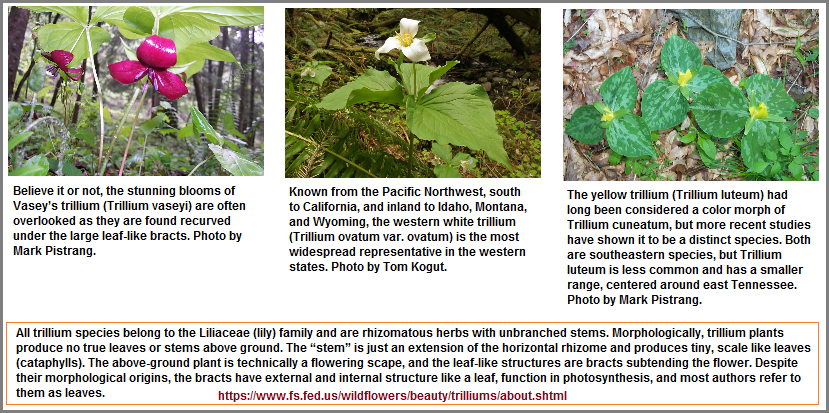
Forty-three species of trillium are known worldwide with a startling thirty-eight represented in North America. Within the United States, the bulk of Trillium diversity is found in the eastern states where Terrific Trilliums are among the favorites on many a spring wildflower walk. Their blooms can be either showy or obscure, a dazzling display of color on a hillside, or a chance surprise hidden under a leaf. With their eye-catching flowers, it is hard to imagine anyone not enjoying the sight of a trillium along a trail on a fine spring morning!
Despite the visual simplicity of trilliums (they all have three petals and three sepals) they are actually a very complex group of plants that can confuse even the best of botanists. The many different species of trillium exhibit only a few and obscure structural differences, making separating the species difficult. One might think that the striking colors of the flowers might be a useful character for identification, yet many of the species have a variety of color forms, and it is not uncommon to find the two growing together! Additionally, many species hybridize, making identifications more difficult. (Source: About Trilliums (U.S. Forest Service))
While on the subject of plants, as I use a wide stepping stone approach to move up the biological spectrum (or "ladder" or "chain of being" if you prefer) while attempting some measure of being consistent with the foregoing with respect to both plants and the previously mentioned linear- circular- triangular correlation between trees and altitude, let me provide an illustration, since others have notice that altitude presents us with different terrains which can limit which types of life forms can exist in a given environment. And no, this does not include the different "altitude" levels below the ocean surface nor above the tallest mountain into space.
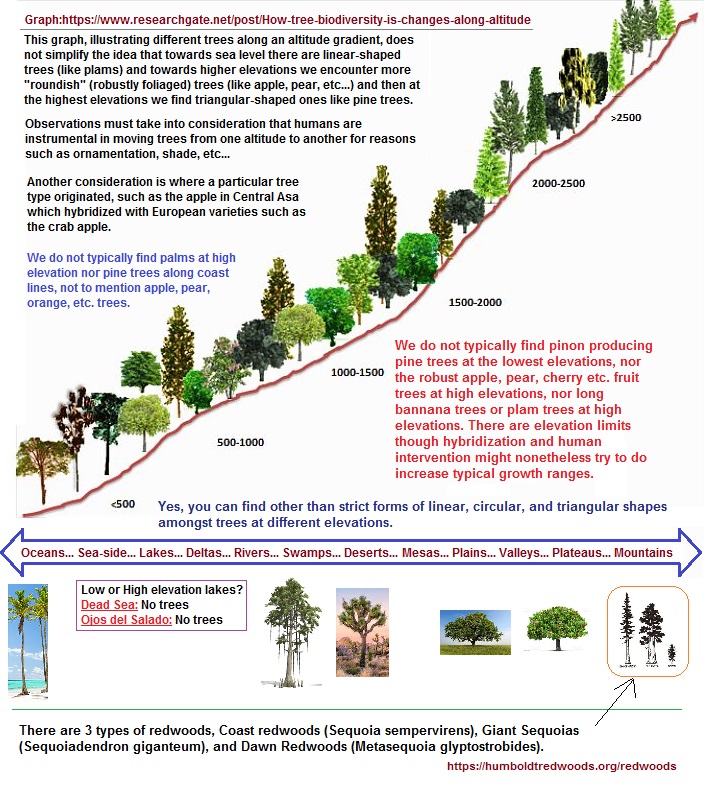
While it is mentioned in the information on the image, let be reiterate that it is possible to find variations of the three forms at the different altitudes not only by human plantation, but by natural means as well. Hence, there is no strict rule that every single tree, bush and other plant needs to conform to the Linear-Circular- Triangular correlation, because we can find tall trunked trees in forests far removed from an ocean as well as tall conifers with long tree trunks such as the Giant Redwoods. An we can find circular (robust foliage) trees in low altitudes, but this does not discredit the observation that elevations do indeed present us with niches for the selected basic geometric forms. When I say there are linear trees along the coast near oceans, this is not difficult to see... nor that further inland there are circular-like trees and that up high in the mountains there are triangular-shaped trees. We do not customarily seek out a triangular tree near an ocean, and do not expect a robust fruit tree (cherry, lemon, apricot, etc.) to be found near the ocean, nor a banana tree in the mountains. Certain trees are expected to be found in certain places and those places have different altitudes. Clearly there are growing limits life on this planet are abiding with.
Whereas we can recognize recurring types of triads just like expecting to see certain trees at given altitudes based on the notion of growth limits or conservation, so too let us consider that the recurring hybrid patterns seen in all the mythologies, fairytales and other genres of expression, are expressions of the limitation we are confronted with when trying to decipher how the human brain may be forced to confine itself to limits of imaginative growth by way of hybridization. The brain itself may well be confined, even its evolutionary limits, but also how it is able to hybridize ideas. We take one, then another and someone else mixes them together to make a third, but may not reveal that it is the result of a hybrid effort, unless others are familiar with the ingredients themselves and can decipher the composite. For example, we can take the black and white to produce a gray, but if we've never seen anything but grey, the idea of a black and a white may seem strange. Not everyone is the same type of chemist. And different chemists work out different mixtures, labeling them in accordance with the vocabulary that has been adopted as a standard understanding. For example, a Crime being committed but the perpetrator is unknown, so a detective looks for someone that exhibits the three mixtures of Motive, Opportunity, and Means. The "MOM", while a "DAD" combination for another crime might be Desire, Anger/ Attitude/Assault/Access, and Desperation or looking for a Denouement. Various words can be used, mix and match as you will to arrive at the closest approximation or definitive appraisal of a given circumstance.
While it is a standard amongst professionals in several fields of research to maintain objectivity, personal involvements do sometimes occur with either good or bad results. One of the involvement types is to use what is called Anthropomorphism, which in the minds of some reviewers, is correlated with the idea of Personification:
Anthropomorphism is the attribution of human traits, emotions, or intentions to non-human entities. It is considered to be an innate tendency of human psychology.
Personification is the related attribution of human form and characteristics to abstract concepts such as nations, emotions, and natural forces, such as seasons and weather.
Both have ancient roots as storytelling and artistic devices, and most cultures have traditional fables with anthropomorphized animals as characters. People have also routinely attributed human emotions and behavioral traits to wild as well as domesticated animals.
Personification is a figure of speech in which an idea or thing is given human attributes and/or feelings or is spoken of as if it were human. Personification is a common form of metaphor in that human characteristics are attributed to nonhuman things. This allows writers to create life and motion within inanimate objects, animals, and even abstract ideas by assigning them recognizable human behaviors and emotions.
Personification is a literary device found often in children's literature. This is an effective use of figurative language because personification relies on imagination for understanding. Of course, readers know at a logical level that nonhuman things cannot feel, behave, or think like humans. However, personifying nonhuman things can be an interesting, creative, and effective way for a writer to illustrate a concept or make a point.
In the past, as well as today in many circumstances, both Anthropomorphism and Personification were and are very real states of presumed logical perception. People did and do think/feel that an inanimate object is directly linked to a real entity or god. Even sounds and shadows or the absence there are can be interpreted as representations of something good or bad in a human sense way. Not only for children, but adults. Call it irrational if you will, but many people believe some inanimate representation has life-like characteristics which can impart good or evil effects on a person. Superstitions are related to Anthropomorphism and personification. Signs, symbols, letters, numbers, etc., are thought to mean something... and thus have power that we have come to project onto them and thus may be used by us to affect another who we may believe will be behaviorally changed accordingly. Yet if someone says something or shows something in a language you are not familiar with, it has no meaning.. except that which we may discern from the person's accompanying expressions and body movements, or lack there of. In any case such ideas as Anthropomorphism and Personification can be used to look at the behavior of supposed inanimate objects as an attempted alternative modeling approach.
However, instead of saying that an earthquake is an expression of a god's or mother earth's anger, we might use some other label such as burp, cough, flatulence, yawn, sneeze, knee jerk, etc... When the use of such words don't work well for us, that they don't provide us with what we can describe as a more comprehensive grasp of events in our sincere efforts to achieve some evaluation which breeches present professional attitudes on a given subject; we might then try to discern a rhythm between one earthquake and the next, such as where, when, intensity, duration, damage assessments, life lost, cost, etc... And though we may pat ourselves on the back and stick a feather in our cap... particularly if all presumed experts use the same language and model of assessment... making a given subject take on the posture and prevailing perception and eagerness for supremacy... like some chess match with opposing positions of perception (or the rivalries/contest of some other game, war/protest strategy, educational perspective, sport, legislative-judicial-executive activity...etc.,), we are left with the fact that we are like a person standing on a shore looking at an approaching wave and there is no where to run to because our model did not provide us with the knowledge needed for an unseen eventuality, which some will nonetheless be dismissive of by providing some rational excuse as humanity becomes fish food. Yep, the playing fields of academic fields is an on-going series of contests journalists do not know how to report accurately nor adequately on as they do other sports.
The so-called magnanimous "cooperation" and supposed higher standard of creating an even playing field of share-and-share-alike so as to further some supposed higher... greater collective goal is a humanitarian farce so long as there are rewards for individualized egotistical efforts such as the Olympic gold medal equivalents called the Nobel prize and other olive branch crown moments being sought after like a journalist's Pulitzer prize or mathematician's Abel prize. Conferences for some scientific or academic presentation of ideas is very much like a Roman arena of gladiators... some quietly waiting their turn and others exceptionally and aggressively eager to get into the ring and take the gloves off, throw down a challenging gauntlet, come out swinging, or use whatever exercised intellectualized martial arts move might be called for under circumstances which may or not have been predicted as a possible encounter during an intellectual gathering where private... aside wrestling matches of ideas can take place before any expected main event. Like any boxing, Mixed Martial Arts, cycling, politics, religion, Black Friday Shopping event (which is another arena-like event sponsored by merchants and other money-salivating animals such as those seeking tithing or "it's free money donations" practiced by charities); or other sporting, academic/scientific events, one can receive the equivalent of embarrassment, bruises, broken bones or even death.
How to get noticed in the Scientific arena
In a world of hyper-production of scientific papers (>1’000’000 per year) publishing a paper in a high impact journal is not enough to make your work noticed anymore. So, you need to get out of your lab and start building your name/image on scientific meetings and conferences. And your secret is... a powerful presentation either through a poster or a talk or both. Through this you will start building your network - a prerequisite for a successful Academic career. People prefer to work and collaborate with people they know in person, and promote people they worked with. Source: Pimp Your Science
It is difficult to get professionals to look outside the comfort of an established model of thinking which provides them with a niche that provides them and others of the same ilk a living with desired social reverberations. Yet, the rebel that I am, I love the idea that I may come up with something which will pull the rug out from under their feet in order to wake them up from their illusions. Many a professional likes to hide away in some private practice so that the inevitability of some possible mistake can not be so easily scrutinized by another professional in the same field who views them as a competitor who needs to be unseated from their throne by any means possible. Though may professionals create niches of illusion that nonetheless provide them with a standard of living they value or simply come to accept under their respective circumstances, those seeking to create a better view of a given research field are merely attempting to create their version of an illusion which someone else at a later time may well dispel and then add their own views as the standard illusion... or delusion. There are so many flavors and colors and scents, it is often difficult to choose one for a career pursuit to either remain in the selected fog or establish a view which blows out the old ideas and assumptions and replaces them with a new variety. If I don't manage to turn some fan on to blow out the stench I see occurring in many different ideas, I have simply created an illusion for myself to wallow in that others may enjoy from time to time as a mud bath resort. It is so much fun! HA! Being nutty and not having to defend one's "crazy, unconventional ideas" is a position I share with many others... in their own way. As for me, let me now return to where this page originally started out, but I had other thoughts in mine when I had woke up. So let me get back to it...
Let me see, now where was I? Oh yeah... whoops, the foregoing list of impressions started in the morning are so lengthy that I must now create another page. Hence, the information which originally came after page 5 will now begin page 7 and the already written page 7 will become 8 and the already written 8 will become 9. Instead of putting the present information at the tail end, I insert it as it comes to mind. While it may look disjointed from the previous page's orientation of thought, realizing what I am doing provides an explanation. It is the same way in which I write the other series at this and another site. Some series I have stopped working on, though a multitude of pages are already written (such as the Accordian Math series), because something comes up and I must pursue it. Like some artists who begin work on one project and then start another, while history is left to record the presence of some unfinished painting... whether it is worth looking at in a public setting or not. The older I get the more anxious I become, since the oldest living male on my father's side of the family was my grandfather who died at 67. On my mom's side of the family they can exhibit a grater longevity. I do not know which side I am on... genetically speaking.
Date of Origination: Friday, 30th July, 2021... 6:38 AM
Date of Initial Posting: Friday, 30th July, 2021... 12:24 PM
Date of Updated posting: Tuesday, 28th September, 2021... 3:53 AM